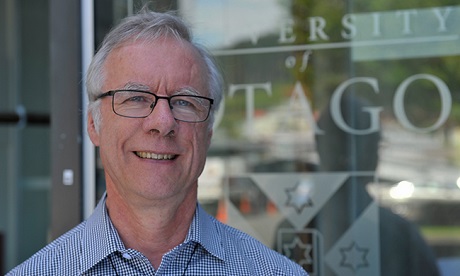Providing equity of access for assisted dying without equity of access to palliative care is to completely undermine the goals of the End of Life Choice Act, says Professor Ben Gray.
“The choice is distorted towards aid in dying and away from palliative care.”
Gray – an associate professor with Otago University’s Department of Primary Healthcare & General Practice says the new Act’s funding mechanism focuses on the wrong things.
“Should funding euthanasia be a health priority for New Zealand’s public health system especially when compared with palliative care?” he asks.
Gray says the funding mechanism for the new legislation provides “…funding for health practitioners to deliver assisted dying services is to support equity of access to assisted dying services for eligible persons.”
The ‘health practitioners’ in this case are medical doctors and nurse practitioners (as against registered nurses).
Research suggests assisted dying in this country will be predominantly taken up by a small number of mostly educated white people, Gray says.
There is no additional legal patient revenue stream available other than the resource provided under the Act.
Privately employed doctors and nurse practitioners can claim a gazetted government fee, but can’t charge patients a co-payment. District health board-employed doctors and nurse practitioners can provide assisted dying services in this capacity but they can’t claim this fee.
Gray also observes the funding objective means assisted dying is different from the vast majority of other services general practice and hospital specialist private practice provide. Unlike most of those services, assisted dying is fully funded by the Government.
In his view, the differences highlight two issues.
Firstly – why is ‘End of Life Choice’ fully funded when most other services, particularly palliative care, are not?
Secondly, funding is critical for the Act’s implementation. If the funding does not cover the cost of providing the services, very few can be expected to provide them.
To fully fund euthanasia while and not providing fully funded palliative care makes a mockery of the “End of Life Choice” Act’s title, says Gray.
He says the ‘choice’ between fully funded assisted dying and severely underfunded palliative care is “horribly distorted”.
Responding to calls to increase euthanasia funding would be even worse in the absence of addressing the underfunding of palliative care, he says.
He observes there was nothing in the Assisted Dying referendum, or discussion beforehand, that addressed whether it should be fully funded.
This is likely to significantly limit the already limited numbers of general practitioners willing to provide aid in dying, he says.
If he’s right in this, public hospitals will face demand for assisted dying when their services are already very stretched, Gray says.
He thinks the answer is for assisted dying to be partially-funded under the existing government capitation payments to general practice, with a patient co-payment to reflect the cost of providing the service.
Source
- Scoop
- Image:University of Otago
News category: New Zealand, Palmerston.




